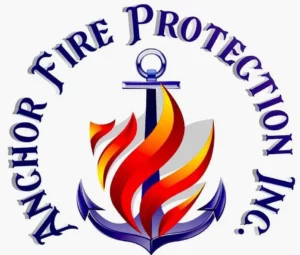What is a Fire Pump? Does your building need it?
A fire pump is a crucial component in a building’s firefighting arsenal. It’s a device designed to increase water pressure and flow for effective firefighting. This is especially vital in buildings where the existing water supply lacks sufficient pressure. High-rise buildings or large complexes often require fire pumps to ensure adequate water pressure during fire emergencies.
Why Your Building Might Need a Fire Pump
The necessity for a fire pump hinges on the building’s structure and the effectiveness of the local water supply in a fire situation. Buildings with several floors or extensive areas typically need these pumps. Without one, firefighters might face challenges in accessing enough water pressure to tackle fires efficiently.
Types of Fire Pumps
Centrifugal Pumps:
Centrifugal pumps are predominantly utilized in various buildings owing to their high efficiency in mobilizing substantial water volumes. The fundamental working principle of these pumps involves an impeller rotating at high speeds to propel water through the firefighting system.
- In-Line Centrifugal Pumps:
- Design Considerations: These pumps are designed with a compact form factor, integrating the motor and impeller along a single axis. This design is particularly beneficial in environments where space conservation is essential.
- Optimal Usage:Primarily recommended for smaller buildings or facilities where spatial constraints necessitate efficient use of available areas.
- Vertical Turbine Pumps:
- Unique Design Features: Characterized by an above-ground motor and a submerged pump mechanism, these pumps are tailored for deep water source extraction.
- Strategic Applications: They are exceptionally suitable for scenarios involving water extraction from deep sources such as wells or underground reservoirs, providing a reliable solution for buildings located in such environments.
- Horizontal Split Case Pumps:
- Structural Attributes: These pumps are distinguished by their horizontally split casing, which facilitates straightforward maintenance and servicing.
- Application Spectrum: They are particularly well-suited for larger structures or industrial complexes where the demand for high water flow rates is a critical consideration.
Positive Displacement Pumps:
These pumps operate on the principle of displacing a consistent volume of water with each operational cycle, thereby achieving high-pressure output efficiently.
- Piston Pumps:
- Functional Dynamics: Employing a piston mechanism, these pumps are adept at drawing in and subsequently expelling water, ensuring precise control over water movement.
- Industrial Relevance: They are predominantly utilized in various industrial settings where control over pressure levels is imperative for specific processes or safety requirements.
- Rotary Pumps:
- Operational Mechanism: These pumps function by capturing water between rotating gears or lobes and the pump casing, thereby ensuring a continuous flow.
- Primary Advantage: Renowned for their ability to maintain a steady flow of water, these pumps are invaluable in situations where a consistent and reliable water supply is critical for firefighting and safety systems.
- Diaphragm Pumps:
- Operational Principle: Utilizing a flexible diaphragm mechanism, these pumps are adept at manipulating water flow, particularly effective in handling fluids with varying solid content.
- Versatile Application: Their ability to manage diverse fluid types makes them particularly useful in complex firefighting scenarios, where water may contain debris or other particulates.
Professional Installation and Maintenance
For expert installation, testing, and maintenance, it’s essential to rely on professional services like Anchor Fire Professionals. Attempting to install or maintain these systems without proper expertise can lead to inefficiencies and safety risks.
Conclusion
Fire pumps play a critical role in the fire safety infrastructure of buildings. Understanding their types, installation requirements, and maintenance needs is key to ensuring your building is well-equipped to handle fire emergencies. Contact us for any queries or services.
FAQ`s
It provides the necessary pressure and flow of water to firefighting systems, such as sprinklers, standpipes, or hydrants. It ensures an adequate water supply during a fire emergency to control or extinguish the fire.
It is to increase water pressure and facilitate the movement of water through a fire protection system. It draws water from a reliable source and boosts its pressure to meet the requirements of firefighting equipment.
A fire pump is specifically designed for firefighting purposes, adhering to stringent standards and regulations. It is typically more robust and capable of maintaining pressure for extended periods. In contrast, a normal pump may not meet the specific performance and reliability standards required for firefighting.
The main parts of a fire pump include the pump itself, an engine or motor to drive the pump, a controller for monitoring and starting the pump, and various valves and gauges to regulate and measure water flow and pressure.
The pressure of a fire pump varies depending on the specific application and system requirements. Fire pumps are designed to provide sufficient pressure to ensure effective water distribution in firefighting systems. Common pressure ranges can be from 400 gpm rated at 51 psi (100 psi – 49 psi in cities?
Keep your property safe.
Related posts
-
Fire Safety Tips for the Workplace
-
Fire Safety Tips for Hospitals
-
How to size fire pumps?
-
Different types of sprinklers?
-
What is fire protection system?
-
Fire Extinguisher Inspection
-
Fire Sprinkler System Components
-
What are the most common types of fire pumps?
-
How much does a fire sprinkler system cost?
-
What is active and passive fire protection?

